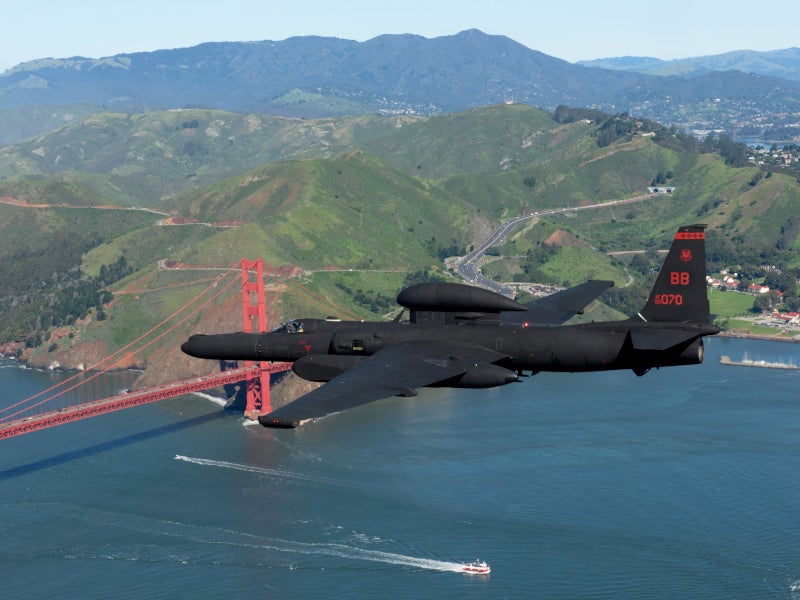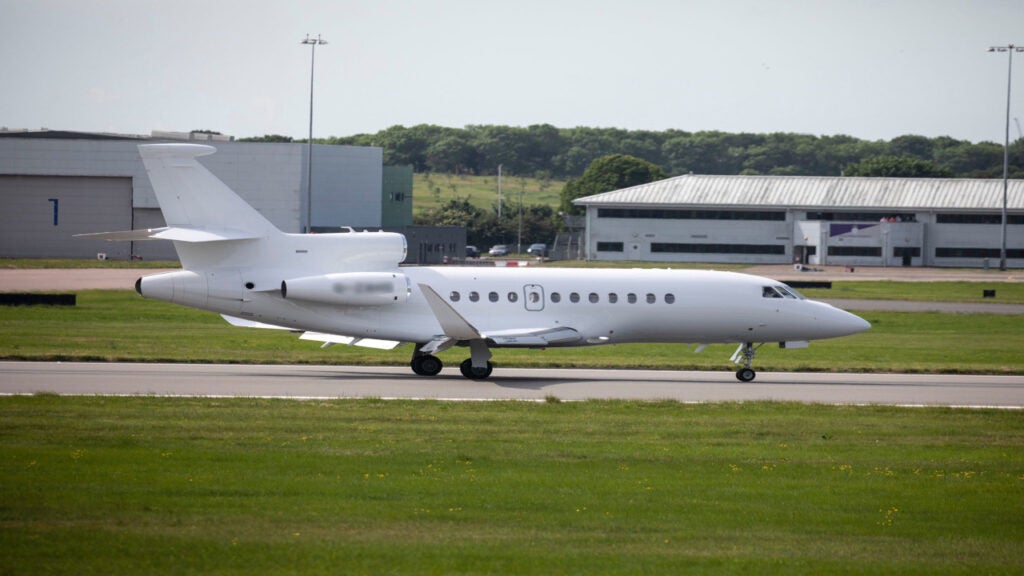
U-2 is a single-jet engine, high-altitude reconnaissance aircraft developed by Lockheed Martin for the US Air Force.
The aircraft first flew in 1955 and provides continuous surveillance day and night and in all weather conditions. The aircraft is capable of gathering surveillance and signals intelligence data in real-time and can be deployed anywhere in the world.
The U-2 spy plane, known as the Dragon Lady, can loiter at 70,000ft (21,336m) over the area of operations for several hours and is often described as a glider due to its flight characteristics.
The design has remained essentially unchanged over decades of operational deployment but the reconnaissance systems are constantly upgraded with state-of-the-art and classified systems.
The last U-2 was delivered in 1989 and there are 32 U-2S aircraft in the US Air Force fleet.
The aircraft was used in Operations Desert Storm and Desert Shield during the Gulf Crisis during 1990 and 1991, over Bosnia and Kosovo in support of Nato forces during the 1990s, in Afghanistan in 2001, and in support of Operation Iraqi Freedom in 2003.
In July 2015, Lockheed Martin completed the sixth flight test of the U-2 integrated with open mission systems (OMS) payloads in support of the USAF’s OMS vision.
Upgrades
The USAF’s entire U-2 reconnaissance aircraft fleet was installed with the senior year electro-optical reconnaissance system (SYERS) sensor SYERS-2C supplied by Collins Aerospace. Completed in February 2020, the sensor upgrades provide the aircraft with enhanced optical performance and accurate long-range tracking to enable improved detection of threats.
In April 2020, the US Air Force awarded a $50m contract to Lockheed Martin to advance the capabilities of the U-2 aircraft to meet the requirements of the future battlespace. The U-2 spy plane will be equipped with a modernised avionics suite, an upgraded cockpit, and an OMS standard-compliant mission computer.
U-2 spy plane design
Removable outrigger gear located away from the fuselage centreline is used to lighten the weight of the airborne aircraft. The outrigger gear, or pogos, are attached with pins, which are removed when the aircraft is on the runway and preparing for take-off. The pogos drop onto the runway as the aircraft lifts and the ground maintenance crew retrieve them immediately after take-off.
Unique to the U-2 aircraft is that the main wing planks are milled from large single billets of metal, rather than built up of riveted sheet metal, I-beams and U-channels. The wings are fitted with titanium skidplates so that when the aircraft lands and is brought to a halt, the wing can gently touch the ground.
The ground crew then refit the pogos so the aircraft can taxi back to the hangar. Each wing has a single aileron surface on the trailing edge to control roll and two flaps to control lift and drag.
U-2 aircraft pilot systems and cockpit
The reconnaissance aircraft is flown by a single pilot, supported by a ground crew led by a fellow pilot known as the mobile officer. The pilot wears a pressure suit and uses the onboard liquid oxygen system for breathing at high altitudes.
A cockpit modernisation programme called RAMP (Reconnaissance Avionics Maintainability Program) was completed in 2007, with the first upgraded U-2S aircraft delivered in April 2002.
The new cockpit of the U-2 spy plane includes a new digital main avionics processor, three 6in x 8in multifunction displays, an up-front control and display unit and an independent secondary flight display system, which serve to reduce pilot workload and improve situational awareness. BAE Systems AN/ALQ-221 advanced defensive system, which consists of a radar warning receiver and Electronic Countermeasures (ECM) system, is also included in the upgrade.
U-2 surveillance payloads and ASARS-2 radar
Aircraft payloads can be configured with a range of sensors to meet the signals and surveillance intelligence requirements of the mission. These include: electro-optic sensors including CCD cameras; ASARS-2 SAR radar; a signals intelligence suite known as Senior Glass, which includes Senior Spear Comint and Senior Ruby Elint systems; and data uplink systems Senior Span and Senior Spur.
The U-2 aircraft, equipped with an ASARS-2 radar, can be identified by the longer nose cone, with two fairing bulges on the top centreline surface in front of the cockpit. The Raytheon ASARS 2 Advanced Synthetic Aperture Radar System is a high resolution day and night all weather side-looking airborne radar (SLAR) for use at high altitude.
The radar has two V-shaped planar arrays with electronically scanned antennas. The radar scans the ground on each side of the aircraft as the aircraft flies over the area of operations. The radar can take pictures of the battlefield to a range of 162km.
ASARS 2 can operate in search and spot modes against moving and stationary targets. In moving target indicator mode, the view of moving targets is presented against a SAR background or a cartographic background. Operation in spot mode against stationary targets provides a higher degree of detail and finer target discrimination. A recorder for the ASARS-2 is installed in the equipment bay forward of the main landing gear well. Data from the ASARS 2 is downloaded via a real-time wideband data link to the TR-1 ground station, TRIGS-1, supplied by Lockheed Martin.
An upgraded Raytheon ASARS-2A radar has been developed which has an increase in coverage, more capable spot mode and enhanced ground moving target indicator, with a new onboard processor. The first ASARS-2A was delivered in August 2001.
Superpods are mounted on the wings at the hardpoints about 10ft from the fuselage. The pods house signals intelligence sensors and systems. The equipment bays E-bay and Q-bay just forward of the main landing gear contain electronics systems and sensor equipment. Satellite communications links are installed in a dorsal pod.
Northrop Grumman developed a new Airborne Signals Intelligence Payload (ASIP) for the USAF U-2 and Global Hawk UAV. Flight testing of the ASIP began on the U-2 in December 2007 and entered service on the U-2 in 2008.
U-2 spy plane engines
All U-2 aircraft have been upgraded to U-2S standard and fitted with the General Electric F118-GE-101 engine, which is lighter and smaller than the previously fitted Pratt and Whitney J75-P-13 non-afterburning turbojet engine. The Dragon Lady has an initial climb rate of 15,000ft/min to around 25,000ft and then uses a lower climb rate to achieve an altitude of 70,000ft. A typical reconnaissance mission might take six and a half hours and the aircraft’s range is over 3,000 miles.
NASA ER-2 scientific research aircraft
The scientific research aircraft derivative of the U-2 is the ER-2 developed by Lockheed Martin for the National Aeronautics and Space Administration (NASA). The ER-2 is a high altitude research aircraft used to carry experiments and sensors. ER-2s can carry airborne scientific payloads of up to 2,600lbs to investigate such matters as earth resources, celestial phenomena, atmospheric chemistry and dynamics and oceanic processes.



